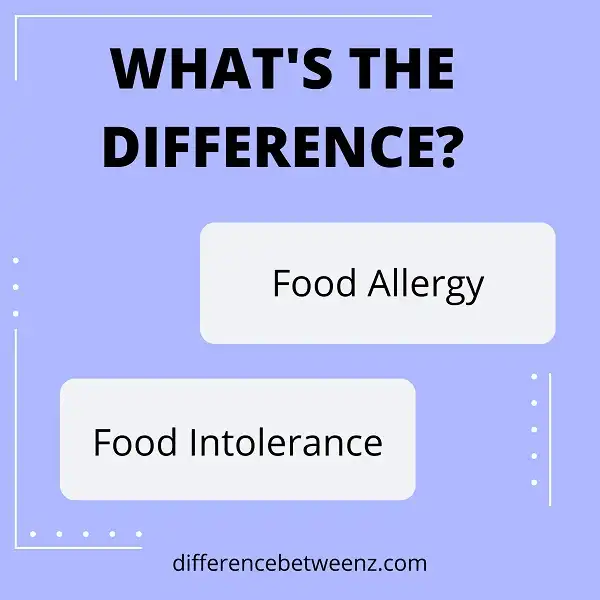Food allergies and food intolerance are two different things, but they are often confused with one another. In this post, we will go over the differences between the two, as well as how to figure out if you have a food allergy or food intolerance. We will also provide some tips on how to manage either condition. Read on to learn more!
What is Food Allergy?
Food allergy is an abnormal immune reaction to food. The body confused the protein in the food as something harmful and reacts accordingly. Food allergies are different from food intolerance. Food allergies can cause a more severe reaction, such as anaphylaxis, which is a life-threatening condition. Some people have a severe allergic reaction to a particular food, while others may be allergic to multiple foods. Food allergies are relatively rare, affecting about 4 percent of adults and 6 percent of children in the United States. However, they are becoming more common, and some experts believe that this increase may be due to changes in the way food is produced and processed. Food allergy symptoms can range from mild (such as hives or itching) to severe (such as anaphylaxis). They can also happen very quickly after eating or may take up to several hours to appear. If you think you or your child has a food allergy, it’s important to see an allergist for diagnosis and treatment. With proper management, most people with food allergies can enjoy a normal, active lifestyle.
What is Food Intolerance?
Food intolerance is a negative reaction to food that does not involve the immune system. Food intolerance can cause abdominal pain, bloating, gas, diarrhea, and nausea. The most common food intolerances are lactose and gluten. Food intolerance is different from a food allergy. A food allergy involves the immune system and can cause anaphylaxis, which is a severe and potentially life-threatening reaction. Food allergies can be triggered by even a small amount of the offending food. Food intolerances are more common than food allergies and usually only occur when a person eats a large amount of the offending food. If you think you have a food intolerance, talk to your doctor about doing an elimination diet or allergy testing.
Difference between Food Allergies and Food Intolerance
Food allergies and food intolerance are two different conditions that can cause similar symptoms. A food allergy is an immune reaction to a specific food protein, while food intolerance is a digestive reaction to a food ingredient. Food allergies can be serious and even life-threatening, while food intolerance is usually uncomfortable but not dangerous. Food allergens are typically proteins that are not broken down during digestion, so they can trigger an immune response when they come into contact with the body. Common food allergens include milk, eggs, peanuts, tree nuts, fish, shellfish, soy, and wheat. Food intolerances, on the other hand, are usually caused by the body’s inability to digest a certain component of the food. For example, lactose intolerance is caused by the body’s inability to digest lactose, a sugar found in milk and other dairy products. People with food intolerances may experience symptoms such as bloating, gas, diarrhea, and abdominal pain after eating the offending food. While both food allergies and food intolerances can be troublesome, it’s important to remember that only food allergies have the potential to be life-threatening. If you suspect that you have a food allergy, it’s important to see a doctor for diagnosis and treatment.
Conclusion
While food allergies and food intolerances may share some of the same symptoms, they are two very different conditions. If you think you may have a food allergy, it is important to see a doctor and get properly diagnosed. Food intolerance can often be managed by making small changes to your diet, but it is always best to speak with a healthcare professional before making any major changes.


